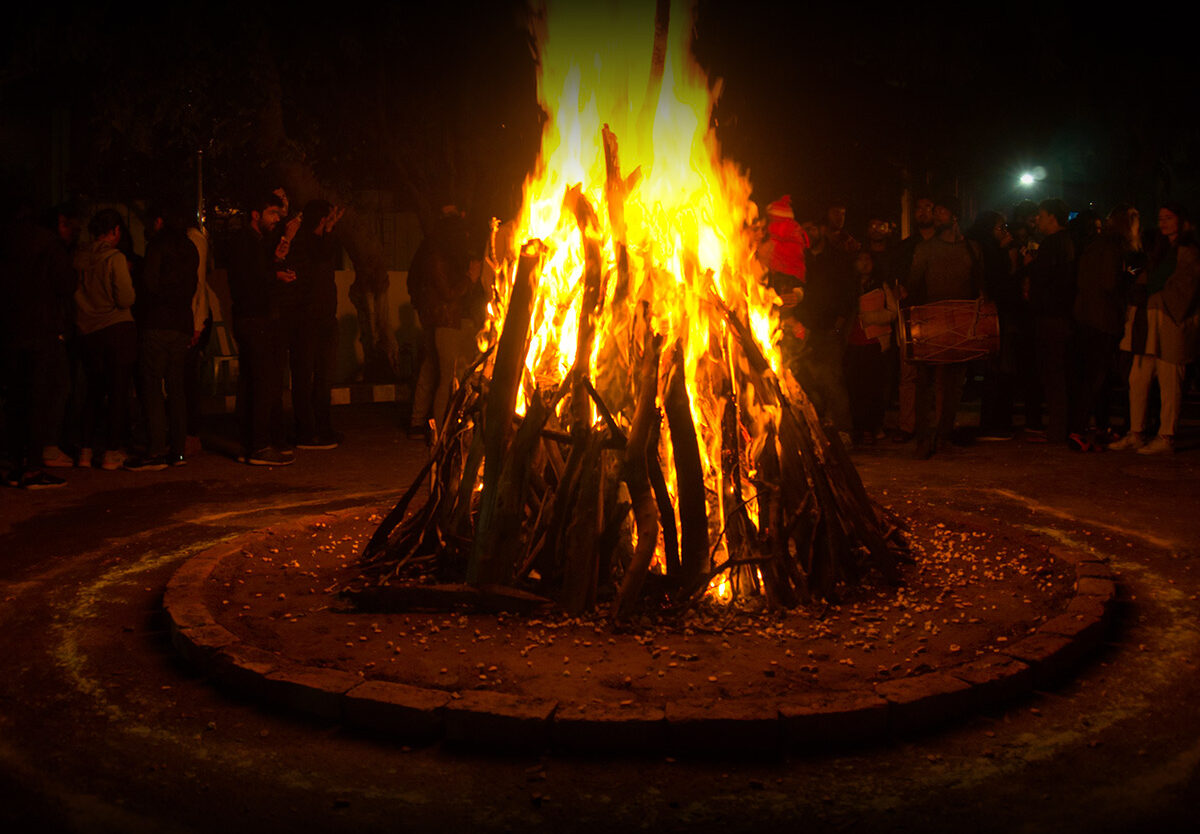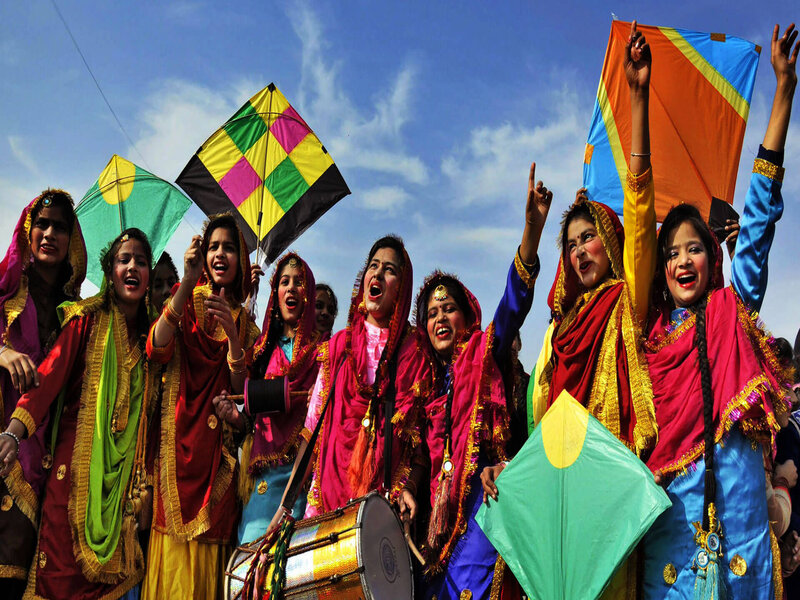Celebrating Lohri Festival : Embracing Tradition and Igniting Joy
As the winter chill sets in, the air in northern India becomes infused with an aura of festivity and joy. The arrival of January not only marks the beginning of a new year but also brings forth the much-awaited and cherished festival of Lohri.This year, it will be celebrated on January 14th. Also known as 'Lohadi' or 'Lal Loi', lohri is primarily celebrated in Punjab and parts of North India. Celebrating Lohri Festival holds immense significance for the farming community, marking the end of the winter solstice and the beginning of longer days.


History of Lohri
The history of Lohri, a seasonal festival prevalent in North India, intertwines with the story of the ancient Indus Valley civilization. This festival signifies the transition from winter to spring, heralding the new year. Lohri is characterized by nighttime bonfires, communal gatherings, lively song and dance, and a sense of unity among a usually fragmented community. Notably, Lohri aligns with other regional celebrations such as Pongal in Tamil Nadu, Makar Sankranti in Bengal, Magha Bihu in Assam, and Tai Pongal in Kerala, all observed during the auspicious occasion of Makar Sankranti.
Several socio-cultural anecdotes and folk legends are associated with Lohri. In Punjab’s cultural history, the Rajput tribe of Bhatti, spanning regions of Rajasthan, Punjab, and Gujarat (now in Pakistan), played a significant role. Dulla Bhatti, the ruler of Pindi Bhattian, was executed by the Mughal king for rebellion. Mirasis, the street singers, narrate the tribe’s history, claiming Maharaja Ranjit Singh as one of its descendants. Much like Robin Hood, Dulla Bhatti assisted the poor by appropriating wealth from the affluent. People commemorated him annually during Lohri, with children singing the Dulla Bhatti folk song while moving door-to-door.
Primarily, Lohri venerates fire and the sun god. It coincides with the sun’s transition into the zodiac sign of Makar (Capricorn), marking its journey northward or Uttarayan. This celestial movement mitigates the severity of winter, infusing warmth into the earth. Lighting bonfires during Lohri serve to fend off the biting cold of January, fostering a festive atmosphere where people dance and revel.
Fire holds profound symbolic meaning associated with life, vitality, and well-being. It represents transformation, regeneration, and the life-giving energy of the sun. This sacred element mirrors rays of light and the preciousness of gold believed to stimulate agricultural growth and human prosperity. Thus, the Lohri fire is sanctified and revered akin to a deity. Celebrating Lohri Festival involves people offer peanuts, popcorn, and various sweet treats made from sesame seeds (til), such as chirva, gajak, and revri, to honor fire as a manifestation of the sun god. Lohri embodies not only the transition of seasons but also the celebration of life, fertility, and the cosmic cycle, fostering a sense of unity and reverence for nature’s elements.
Also read – https://himachal.blog/significance-of-ram-mandir-uniting-faiths-and-building-legacies/
How is Lohri celebrated
The festival of Lohri is steeped in traditions and customs, adding color and exuberance to the lives of people. Celebrated on the eve of the winter solstice, It typically falls on the 13th or 14th of January each year, when the harvest of Rabi crops, particularly wheat and mustard, is ready for reaping. This auspicious day is marked by lighting bonfires, singing folk songs, dancing joyously, and enjoying delectable traditional delicacies.The preparation for Lohri begins days in advance. People clean their houses, decorate them with vibrant colors, and adorn their courtyards with beautiful rangoli designs.
Families come together, and the festive spirit reverberates through every corner. One of the key rituals of Lohri is lighting the bonfire. Families and communities gather around these bonfires, tossing in sugarcane, sesame seeds, popcorn, and other offerings while singing traditional folk songs and performing the iconic bhangra and gidda dances.
The warmth of the bonfire not only provides physical comfort in the biting cold but also symbolizes the passing of the winter season and the advent of longer, warmer days. Elders often narrate folk tales and legends associated with Lohri, passing down the cultural heritage to the younger generation.
Another essential aspect of Lohri is the exchange of greetings and offerings. Families and friends exchange sweets, nuts, and jaggery, symbolizing prosperity and sweetness in their relationships. Additionally, new brides and newborns are especially celebrated during this festival, and it holds particular significance for them as they receive blessings and gifts from their elders.
Traditional delicacies are an integral part of Celebrating Lohri Festival. Mouthwatering dishes like sarson da saag and makki di roti, til laddoo, gur (jaggery), peanuts, and popcorn are savored with great delight. The feast is not only a treat for the taste buds but also a celebration of the bountiful harvest.
Significance of lohri
Moreover, Lohri transcends religious boundaries and brings together people from diverse backgrounds. It fosters unity, spreading joy and happiness among all communities, and showcasing the rich cultural tapestry of India.
Celebrating Lohri Festival is deeply rooted in agricultural traditions, its essence goes beyond just a harvest festival. It signifies the triumph of good over evil, the importance of community, and the spirit of gratitude towards nature for its bounty.
In recent years, Lohri celebrations have not only remained confined to India but have also gained recognition and popularity globally, with people from different parts of the world partaking in the festivities, experiencing the rich heritage and traditions associated with this jubilant occasion.
As Lohri 2024 approaches, the anticipation and excitement among people are palpable. The festival’s spirit continues to thrive, spreading warmth, happiness, and togetherness among all. It serves as a reminder of the cultural richness and the age-old traditions that bind communities together, fostering a sense of unity and harmony.
Conclusion
In conclusion, Lohri is not just a festival; it’s a celebration of life, a tribute to the resilience of the farming community, and an embodiment of the vibrant and diverse cultural fabric of India.
Happy Lohri to all, may the bonfires of joy, harmony, and prosperity continue to illuminate our lives!












